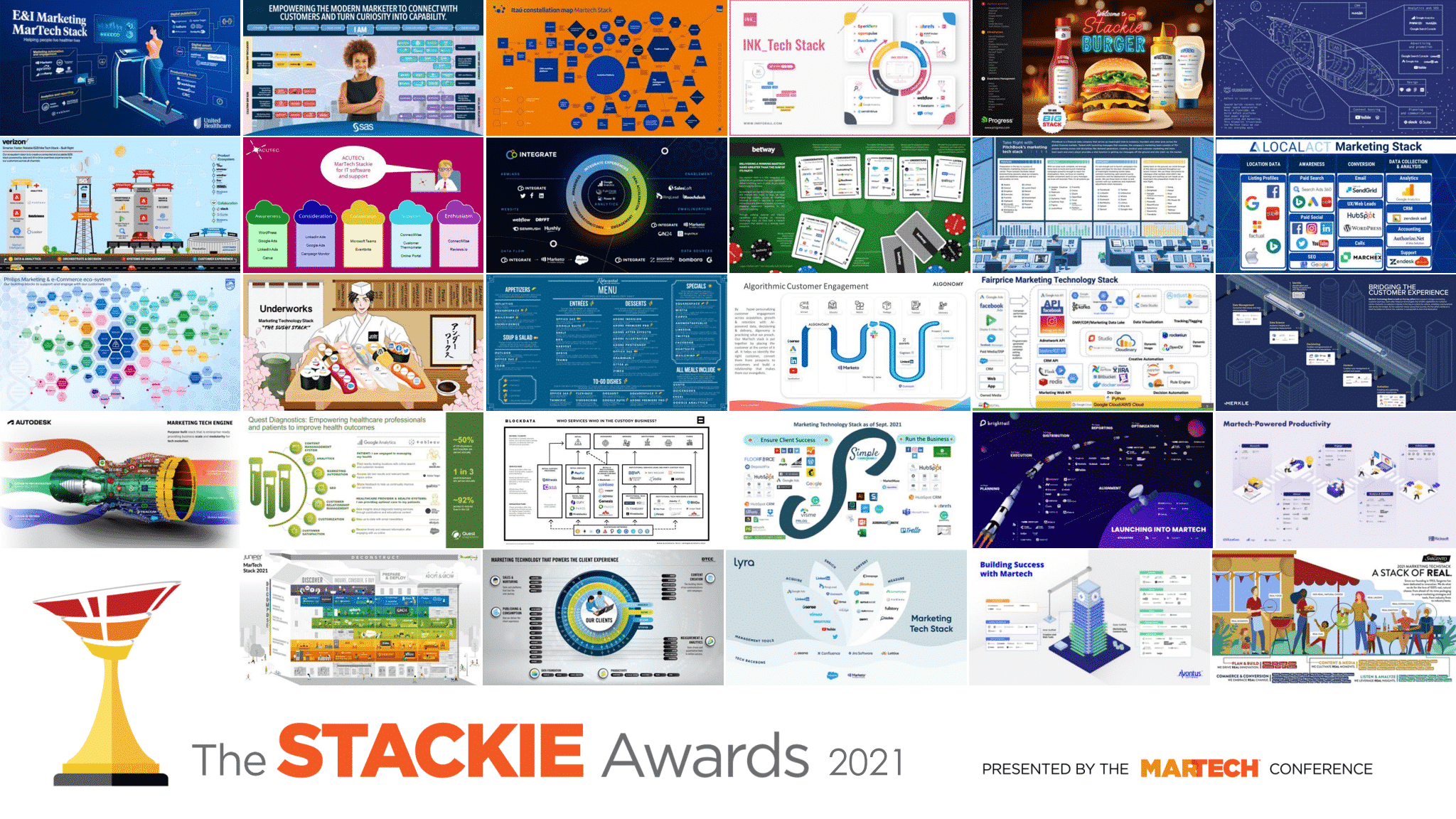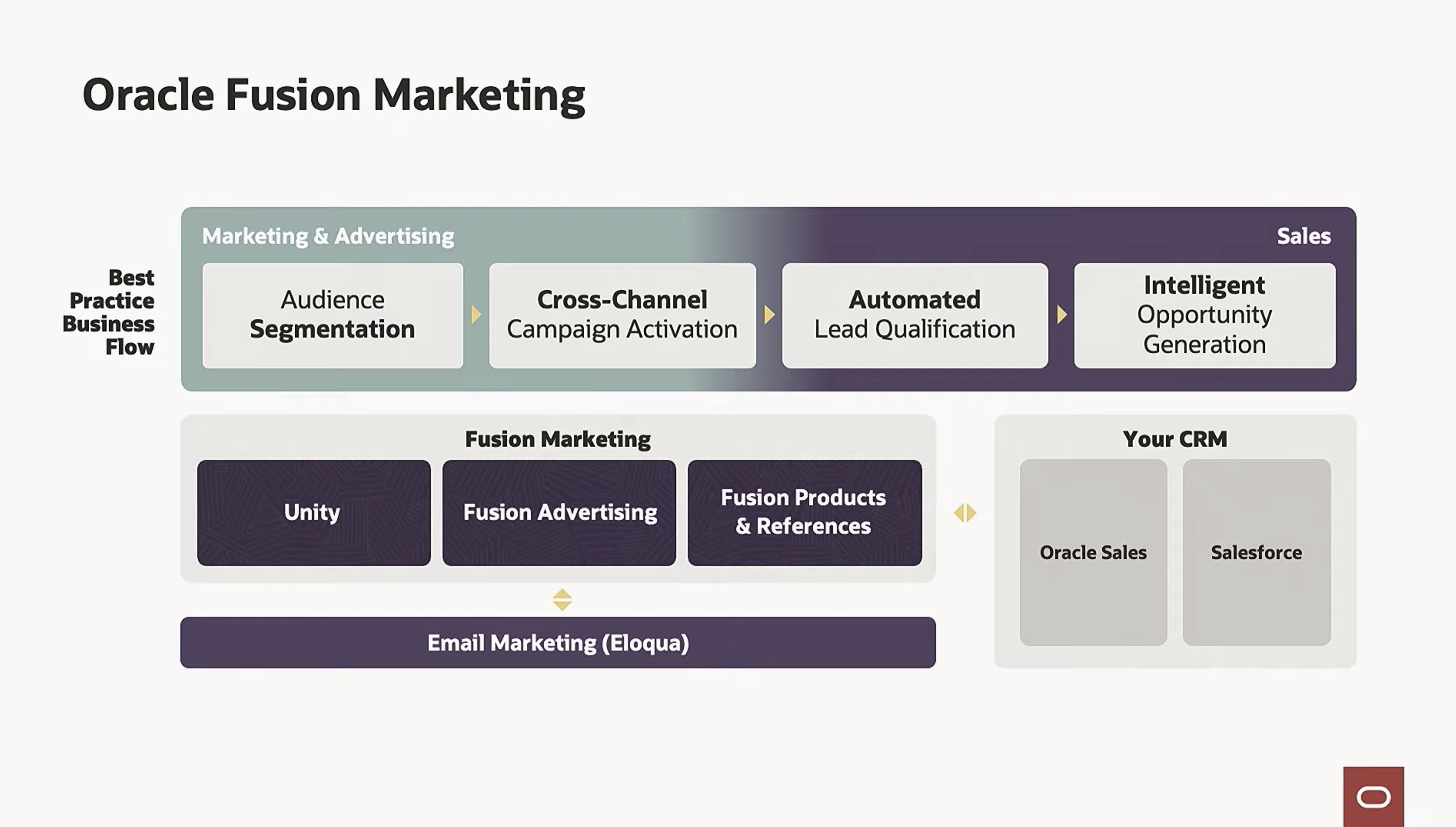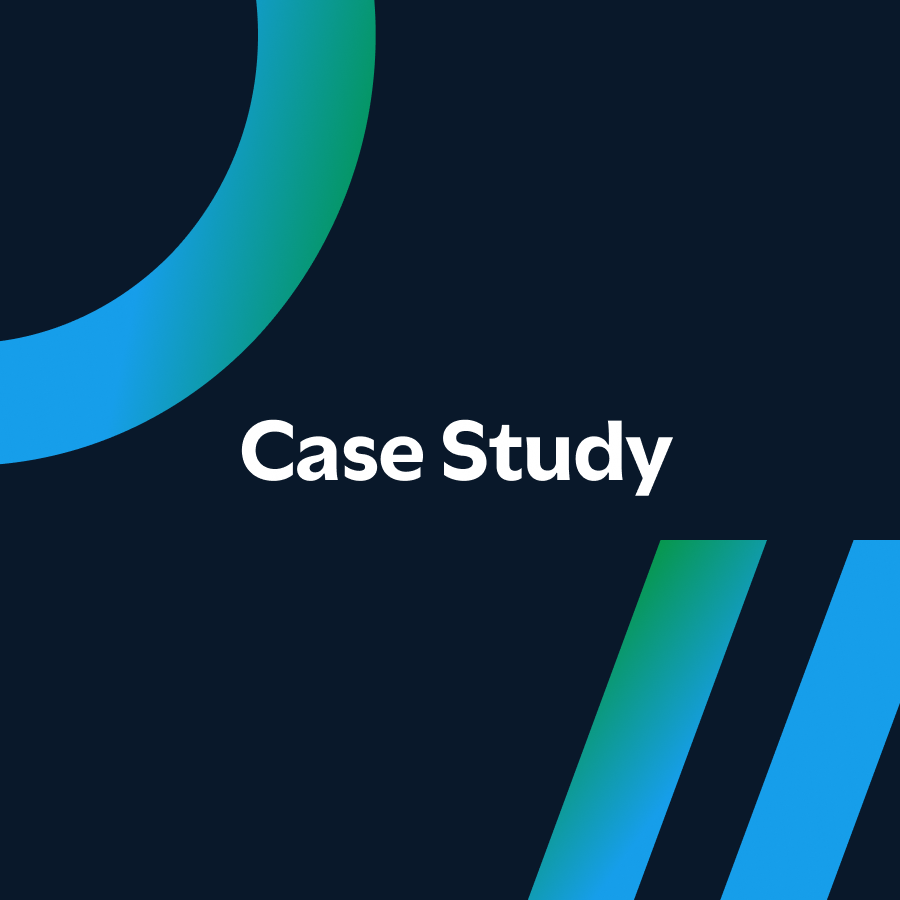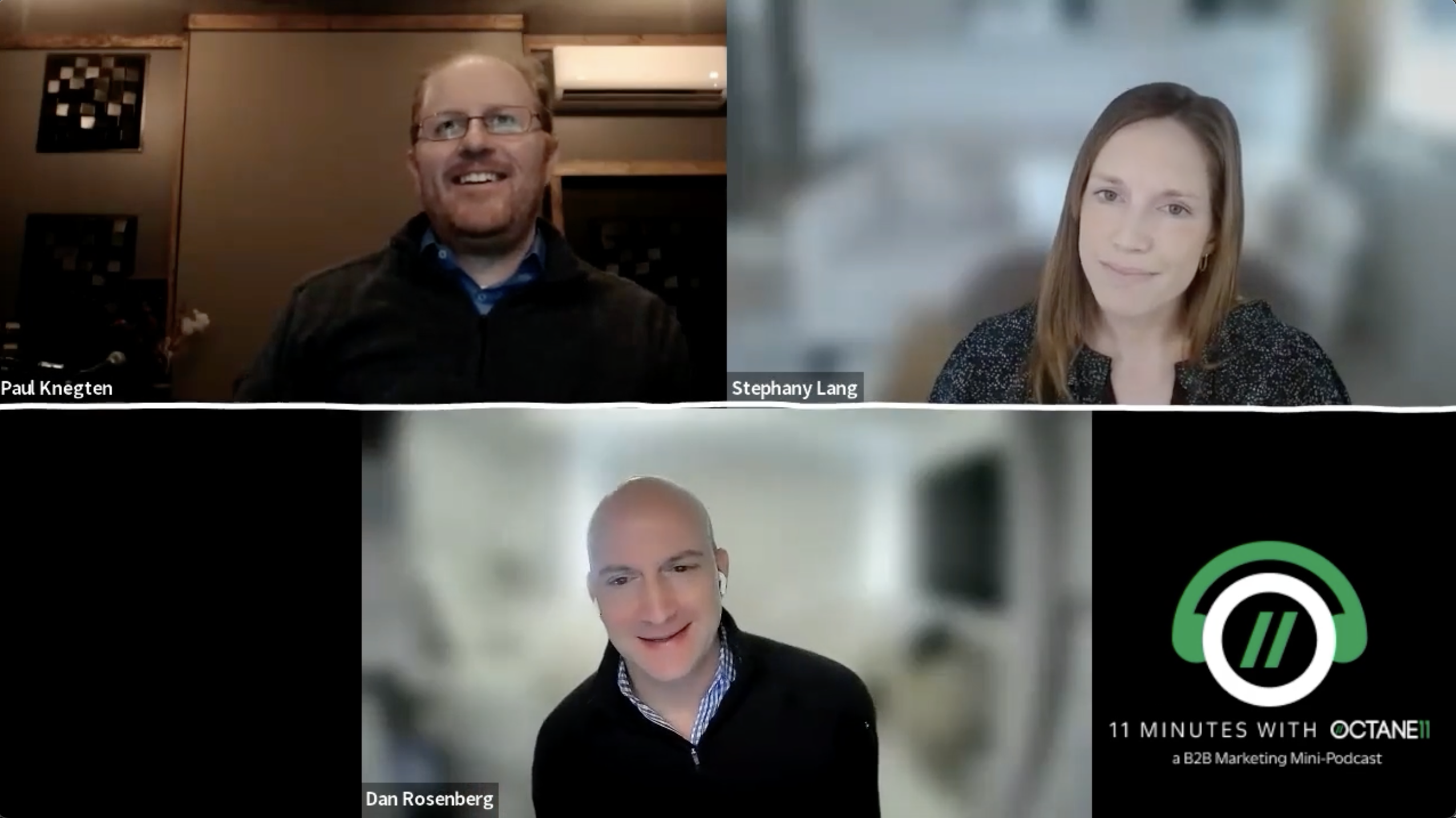I just love the Stackie Awards. Created by Scott Brinker, the head of ecosystem over at HubSpot and editor at chiefmartec.com, the Stackies challenge companies to showcase their marketing tech stacks (email, web, content, chat, social, analytics, etc, etc) on a single slide in a precise and logical way…and also with a bit of fun and creativity. This year’s winners were announced last week (betway’s entry used a poker table visual and Autodesk’s used a jet engine 

What’s always astonishing to me, though, is the sheer number of tools in these stacks (the top 5 winners showed an average of 48 tools each!!), the wide range of taxonomies (ie. how they categorize their different tools), and the lack of any clearly dominant vendor in the landscape (Google, Salesforce and Adobe appeared most often in the top 5 stacks, but none of them accounted for more than 10% of the tools in any one stack). Ask any marketing leader and you’ll find that this tendency towards heterogeneous, complex stacks is now the norm within companies – not just for marketing teams, but for pretty much every team across the enterprise. While best-of-breed tools are great, this trend is also creating increasing confusion across teams and skyrocketing costs for data management tools and personnel like data engineers and data scientists to make sense of it all (if you can even hire them anymore).
As if in response to the Stackies celebration of martech’s beautiful complexity (though likely just a coincidence of timing), just a week later Oracle announced the limited release of “Oracle Fusion Marketing” to address the challenges of “disconnected workflows, too much manual administration, and siloed data often preventing sales and marketing teams from working with each other…” Oracle Fusion’s approach is to create a completely unified, end to end solution that encompasses audience selection, content development, email / landing page / ad creation, and delivering client signals to a sales CRM. You might see Oracle Fusion as an attempt to replace the entire martech stack, or you might see it as simply fitting into an existing stack, checking a few key boxes with a tightly coupled solution, similar to purpose-built ABM solutions like Demandbase, 6sense, Terminus or Rollworks. In any case, it’s clear that Oracle recognizes the large and growing pain caused by increasingly fragmented martech stacks and is putting some real focus towards delivering a solution.

Source: Oracle Future of CRM: https://www.oracle.com/events/live/future-of-crm/
So what do you do if you’re a Sales & Marketing leader looking to wrangle a complex set of tools right this minute and you don’t (yet) have a beautiful Stackie-worthy diagram or an enterprise-grade Oracle-style solution? The good news is that there’s plenty you can do to leverage your existing tools and investments.
Here are some basic tips to get started:
- Obey the “80/20 Rule” (aka the Pareto Principle): It’s tempting to build out the most detailed and customized integration framework to measure and manage your business – but don’t do it! All too often those complex systems take too long to set up and are too complicated to track and maintain…and end up never getting used at all. Instead go for a more simple approach, that everyone on the team can understand, that is easy to maintain and will get you 80% of the learnings with just 20% of the effort. That means fewer account lists, fewer sales stages, fewer KPI’s, and starting with the most meaningful integrations first!
- Be Consistent: Building the muscles to track and learn from your data takes time. The worst thing you can do is constantly change sources and frameworks. If you don’t lay the groundwork for benchmarking and steady improvement, you’ll never make any progress. Per #1, keep it simple, get started quickly, start small and build on early successes…and then be consistent. If you’re consistent in delivering metrics to your team, your peers, and company leadership, you will instill confidence and create clarity for making real business decisions.
- Don’t Reinvent the Wheel: Finally, remember that you’re not in this alone. There are so many great partners who have been down this path before that you can learn from and emulate. Peers, consultancies, agencies, data platforms, ecosystem tools, etc, etc, can help you get started quickly. One bit of advice, though, is to pay attention to how partners get paid, to make sure your goals and their goals are fully aligned (ie. improving efficiency / not adding unnecessary costs, driving real business performance / not vanity KPI’s, transparent fees on services they provide / not marked up media buys, etc).
Like I said, I love the Stackies and I’m excited by the opportunity for Oracle Fusion and others to unify large swaths of the martech stack. I’m also aware that the trend among top companies is towards more fragmentation of the stack and not less. It’s the main reason why we launched Octane11 – to help connect the dots across the full gamut of software tools used throughout B2B enterprises, not just within Sales and Marketing, but across the entire org. The Octane11 platform integrates with a wide range of SaaS tools, data warehouses, ELT’s, CDP’s and more, adding B2B-specific structure and metadata to unlock immediately actionable insights. We’re already helping some of the most forward-looking B2B companies, their agencies and platform partners to create integrated, actionable insights across their entire business.
If you’re a B2B company struggling to integrate and enhance your siloed departmental data to make it actionable for your organization, visit www.octane11.com to learn more and see how we can help you!





